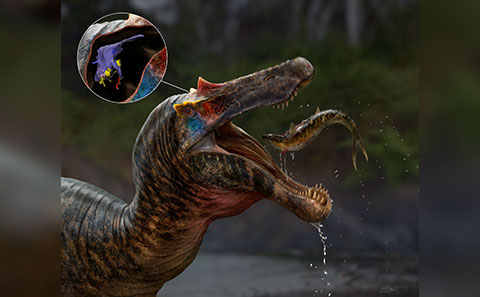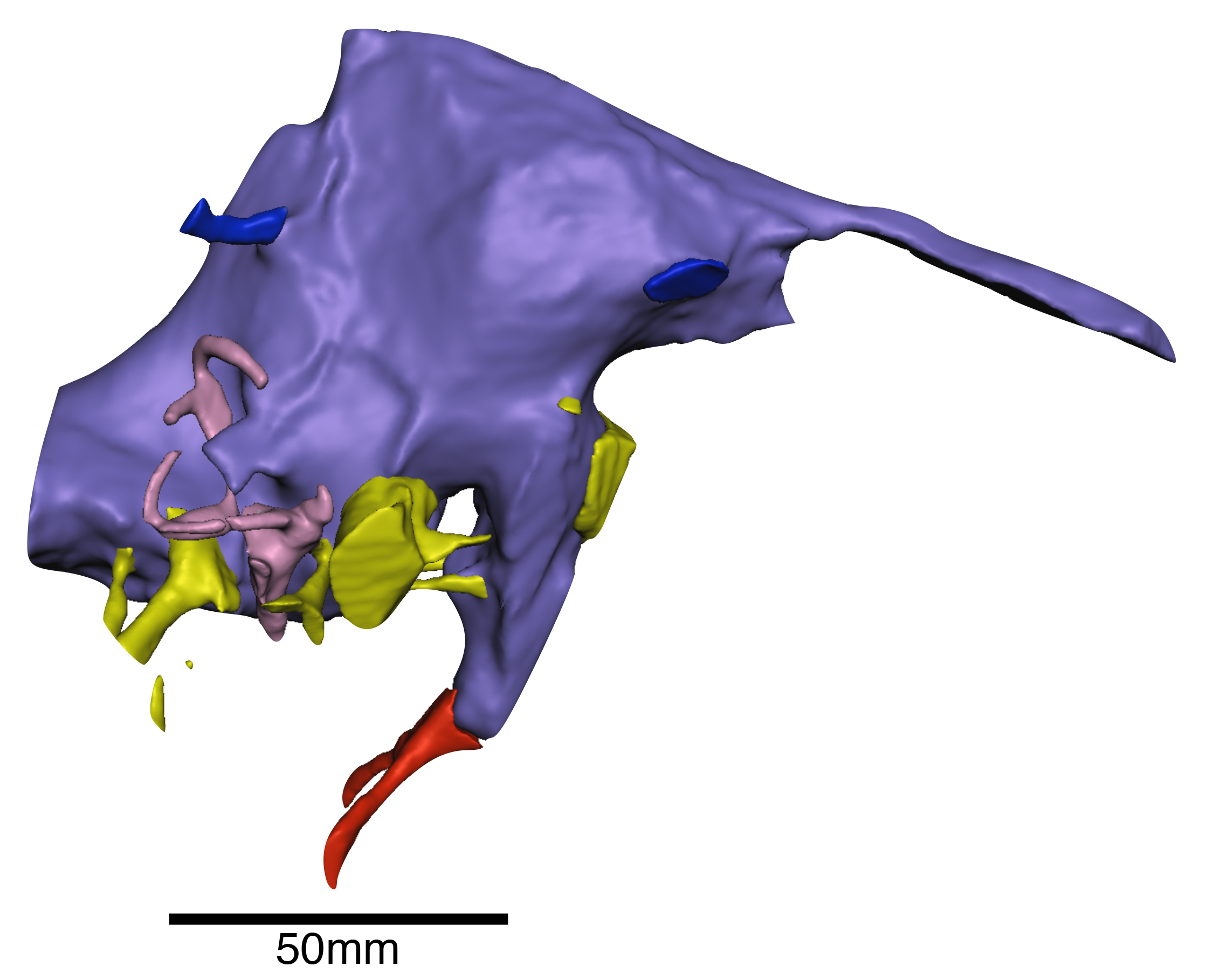Oldest Spinosaur brains revealed

Researchers from the University of Southampton and Ohio University have reconstructed the brains and inner ears of two British spinosaurs, helping uncover how these large predatory dinosaurs interacted with their environment.
Spinosaurs are an unusual group of theropod dinosaurs, equipped with long, crocodile-like jaws and conical teeth. These adaptations helped them live a somewhat-aquatic lifestyle that involved stalking riverbanks in quest of prey, among which were large fish.
This way of life was very different from that of more familiar theropods, like Allosaurus and Tyrannosaurus.
To better understand the evolution of spinosaur brains and senses, the team scanned fossils of Baryonyx from Surrey and Ceratosuchops from the Isle of Wight. These two are the oldest spinosaurs for which braincase material is known. The huge creatures would have been roaming the planet about 125 million years ago years ago. The braincases of both specimens are well preserved, and the team digitally reconstructed the internal soft tissues that had long rotted away.
The researchers found the olfactory bulbs, which process smells, weren’t particularly developed, and the ear was probably attuned to low frequency sounds. Those parts of the brain involved in keeping the head stable and the gaze fixed on prey were possibly less developed than they were in later, more specialised spinosaurs.
Findings are due to be published in the Journal of Anatomy.
“Despite their unusual ecology, it seems the brains and senses of these early spinosaurs retained many aspects in common with other large-bodied theropods – there is no evidence that their semi-aquatic lifestyles are reflected in the way their brains are organised,” said University of Southampton PhD student Chris Barker, who led the study.
One interpretation of this evidence is that the theropod ancestors of spinosaurs already possessed brains and sensory adaptations suited for part-time fish catching, and that ‘all’ spinosaurs needed to do to become specialised for a semi-aquatic existence was evolve an unusual snout and teeth.
“Because the skulls of all spinosaurs are so specialised for fish-catching, it’s surprising to see such ‘non-specialised’ brains,” said contributing author Dr Darren Naish. “But the results are still significant. It’s exciting to get so much information on sensory abilities – on hearing, sense of smell, balance and so on – from British dinosaurs. Using cutting-edged technology, we basically obtained all the brain-related information we possibly could from these fossils,” Dr Naish said.

Over the last few years, the EvoPalaeo Lab at the University of Southampton has conducted substantial research on new spinosaurs from the Isle of Wight. Ceratosuchops itself was only announced by the team in 2021, and its discovery was followed up by the publication of another new spinosaur – the gigantic White Rock spinosaur – in 2022. The braincase of Ceratosuchops was scanned at the μ-Vis X-ray Imaging Centre at the University of Southampton, home to some of the most powerful CT scanners in the country, and a model of its brain will be on display alongside its bones at Dinosaur Isle Museum in Sandown, on the Isle of Wight.

“This new research is just the latest in what amounts to a revolution in palaeontology due to advances in CT-based imaging of fossils,” said co-author Lawrence M. Witmer, professor of anatomy at the Ohio University Heritage College of Osteopathic Medicine, who has been CT scanning dinosaurs—including Baryonyx—for over 25 years. "We’re now in a position to be able to assess the cognitive and sensory capabilities of extinct animals and explore how the brain evolved in behaviourally extreme dinosaurs like spinosaurs.”
“This new study highlights the significant role British fossils have in our constantly evolving, fast-moving understanding of dinosaurs, and shows how the UK – and the University of Southampton in particular – is at the forefront of spinosaur research,” said Dr Neil Gostling who leads the University of Southampton’s EvoPalaeoLab. “Spinosaurs themselves are one of the most controversial of all dinosaur groups, and this study is a valuable addition to ongoing discussions of their biology and evolution.”